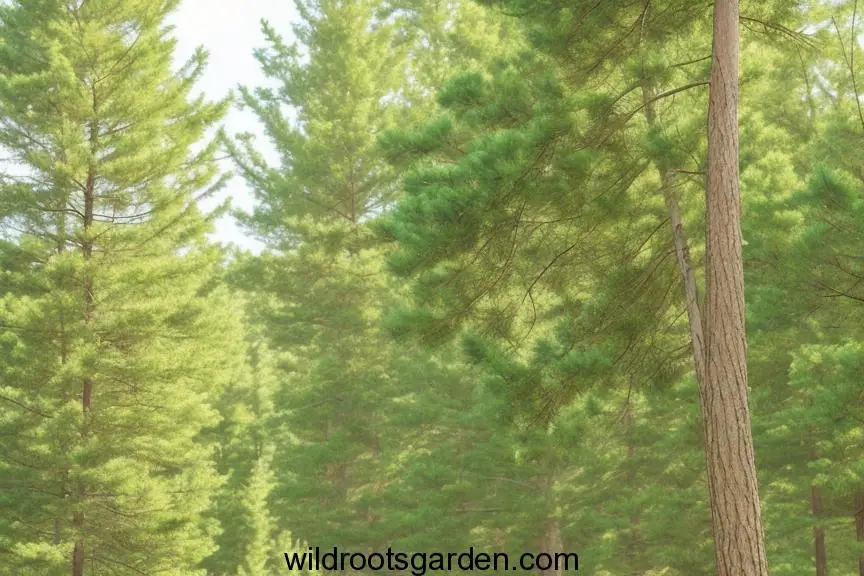The Best Wood Types for Your Raised Garden Bed. When choosing wood for your raised garden bed, there are a few factors to consider, such as rot resistance, insect resistance, and cost. Some of the best wood types for raised garden beds include cedar, redwood, pressure-treated wood, hemlock, and pine.
Cedar is a good choice for raised garden beds because it is naturally rot- and insect-resistant. Redwood is another good choice, but it is more expensive than cedar. Pressure-treated wood is a good option if you are on a budget, but it is important to note that the chemicals used in pressure-treated wood can leach into the soil. Hemlock and pine are less rot-resistant than cedar and redwood, but they are more affordable.
The best type of wood for your raised garden bed will depend on your budget, the climate in your area, and the type of plants you plan to grow.
Here are some additional details that you can include in the meta description:
- The different types of wood that are commonly used for raised garden beds, along with their advantages and disadvantages.
- factors to consider when choosing wood for a raised garden bed, such as rot resistance, insect resistance, cost, and climate.
- Tips for building a raised garden bed, such as choosing the right size and location, and preparing the soil.
- The benefits of using a raised garden bed, include improved drainage, better soil quality, and easier access to plants.
Raised Garden Bed Wood Type: A Vital Decision

When it comes to raised garden beds, the choice of wood is crucial. The wood type influences factors such as longevity, resistance to pests and weather, and the overall aesthetic of your garden. Let’s explore some of the most popular wood options for raised garden beds:
Cedar: Nature’s Gift to Gardeners
Cedar is a standout choice for raised garden beds. Its natural oils act as a deterrent to insects, ensuring your garden remains pest-free. Additionally, cedar resists decay even when in contact with soil, making it an excellent long-term investment.
Redwood: Durability and Elegance
Redwood is another favored wood type. With its natural resistance to rot and insects, redwood offers durability without the need for chemical treatments. Its rich reddish hue also adds a touch of elegance to your garden.
Pressure-Treated Pine: Balancing Act
Pressure-treated pine is an affordable option, treated to resist decay and insects. However, it’s essential to choose a treatment that’s safe for plants and to line the interior with landscape fabric to prevent direct contact between the wood and soil.

Cypress: Rot-Resistant and Stylish
Cypress is renowned for its resistance to decay, ensuring your garden bed stands the test of time. Its light color adds a bright, inviting feel to your garden space, enhancing the visual appeal of your plants.
Douglas Fir: Strength and Affordability
Douglas Fir strikes a balance between strength and cost-effectiveness. While it may require a protective finish to enhance its durability, it remains a popular choice for gardeners looking for sturdy construction on a budget.
FAQs About Raised Garden Bed Wood Types:
1. Is treated wood safe for growing vegetables?
Treated wood can be safe for growing vegetables, provided you choose the right treatment that’s safe for plants. Avoid using wood treated with chemicals that could leach into the soil.
2. How long can I expect cedar garden beds to last?
Cedar garden beds can last anywhere from 10 to 20 years, depending on the quality of the wood and how well they’re maintained.
3. Should I place a barrier between the wood and the soil?
Yes, it’s a good idea to use a barrier like landscape fabric to prevent direct contact between the wood and soil, especially with wood types that aren’t naturally resistant to decay.
4. Can I use reclaimed wood for raised beds?
Using reclaimed wood can be a sustainable option, but ensure it’s not treated with harmful chemicals. Be cautious of potential contaminants.
5. How can I extend the lifespan of my raised garden bed?
Regular maintenance such as sealing, staining, and proper drainage can significantly extend the life of your raised garden bed, regardless of the wood type.
6. Are hardwoods a suitable option for raised beds?
While hardwoods like oak and maple are durable, they can be quite costly and might not provide a significant advantage over other, more affordable wood options.
- When choosing wood for your raised garden bed, it is important to consider the climate in your area, the type of plants you plan to grow, and your budget.
- Cedar is a good choice for raised garden beds in any climate, but it is especially well-suited for areas with wet or humid conditions.
- Redwood is another good choice for raised garden beds, but it is more expensive than cedar.
- Pressure-treated wood is a good option if you are on a budget, but it is important to note that the chemicals used in pressure-treated wood can leach into the soil.
- Hemlock and pine are less rot-resistant than cedar and redwood, but they are more affordable.
- The best type of wood for your raised garden bed will depend on your individual needs and preferences.
Here are some additional thoughts:
- Raised garden beds can be a great way to improve the drainage and aeration of your soil, as well as make it easier to garden.
- They can also help extend the growing season in colder climates.
- If you are considering building a raised garden bed, be sure to do your research and choose the right type of wood for your needs.


